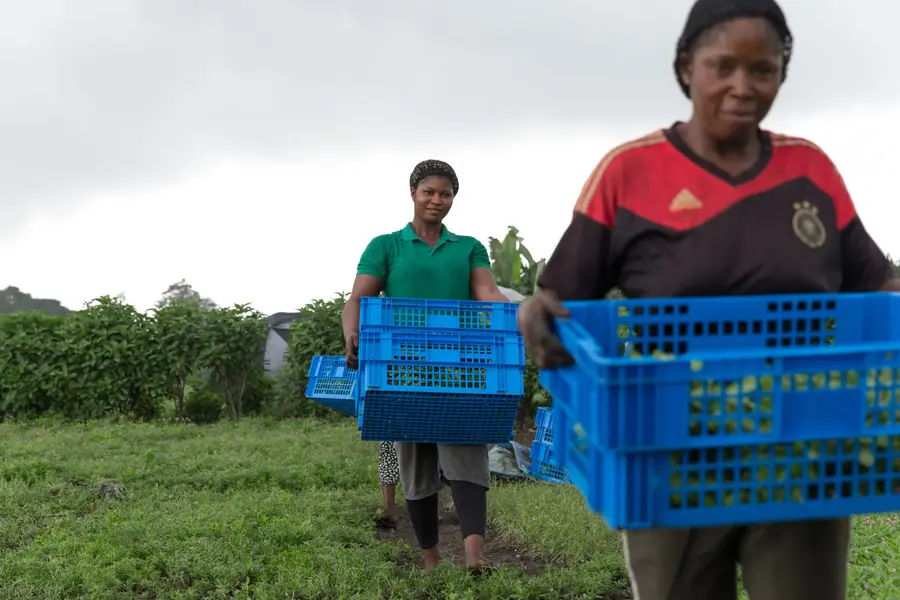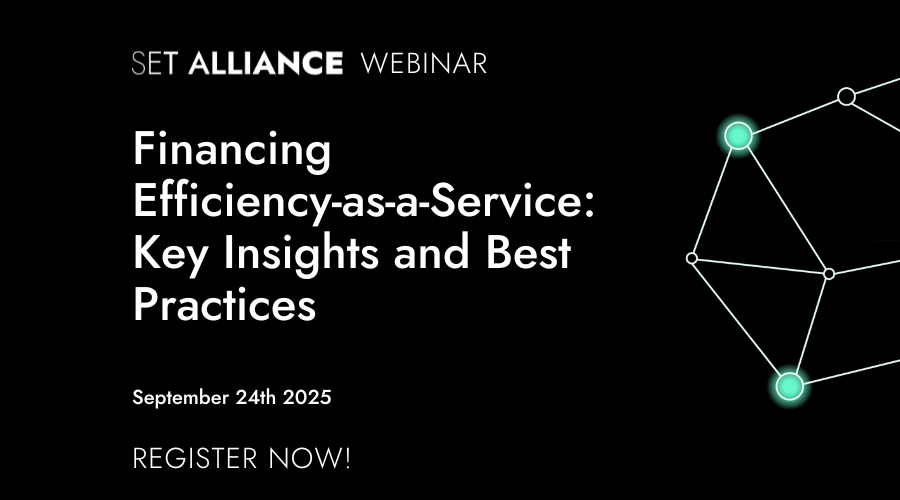In this webinar, we brought together experts to discuss how servitisation can accelerate the deployment of circularity in product offerings.
This webinar was designed for solution providers, specialists in the built environment, as well as building owners and end customers interested in scaling energy efficiency, decarbonisation and circularity.
Background
It is increasingly being recognised that Product-as-a-Service (PaaS) business models incentivise circular practices, even if the potential is yet to be fully harnessed. Arguably PaaS has the potential to increase resource efficiency and prolong the useful life of products. Providers stand to benefit economically from enhancing and retaining value whilst lowering resource consumption. But to reduce environmental impacts and align with circular economy principles, PaaS models must be intentionally designed with these practices in mind.
Therefore, understanding the circular elements of business models and practices such as PaaS is becoming very important for technology providers, customers, and financiers willing to generate value from circularity and reduce their ecological.
With this idea in mind, the BASE Foundation and the global SET Alliance, with support from the Circular Building Coalition, are creating guidelines to help stakeholders incorporate circular practices into PaaS contracts for building services like cooling, heating, and lighting. These guidelines, compiled in a white paper aim to encourage the adoption of circular PaaS models in European building projects by improving resource efficiency and extending product life cycles.
This webinar brings industry experts together to discuss:
- How can circularity principles be integrated into Product-as-a-Service models and contracts?
- What are some of the key characteristics of current PaaS contracts and offerings for the services layer of buildings related to circularity?
- What are some of the challenges and opportunities associated with integrating circular practices into PaaS?
Session Highlights:
In this webinar, experts showcase the value of product-as-a-service to scale energy efficiency and the implementation of a circular economy.
Product-as-a-Service and Circularity: what does it mean, where do we stand, what is needed to go forward?
Dimitris Karamitsos, business development specialist at BASE Foundation who previously led the Cooling-as-a-Service and Efficiency-as-a-Service Initiatives, kicked off the session by introducing the servitisation business model, its benefits and circularity potential according to BASE experience and the findings of the white paper.
Dimitris highlighted the significant benefits of transitioning to a circular economy and adopting renewable energy and energy efficiency measures. Remarkably, 90 percent of emission reduction targets can be achieved through renewable energy, with energy efficiency alone contributing to 35 percent of the required cumulative CO2 savings by 2050. Additionally, circular economy practices could reduce global greenhouse gas emissions by 39 percent by 2050.
Despite having the necessary tools for a sustainable shift, this transition demands at least USD 2.4 trillion in annual global investments to maintain temperatures below 1.5 degrees Celsius, leading to a slow progression.
BASE and the SET Alliance have identified several barriers:
- High capital expenditures (CAPEX) for energy-efficient systems.
- Performance uncertainties.
- The complexity and perceived expense of adopting circular practices.
- Conflicting investment priorities focused on profitability and risk management.
To overcome these challenges, business model innovation, particularly through Product-as-a-Service, is crucial. PaaS, already successful in sectors like printing and solar panels, shows strong potential for energy-intensive systems such as heating, cooling, lighting, and compressed air. This model addresses market barriers by offering technology on a pay-per-use basis while the provider maintains ownership and is responsible for the system’s lifecycle, encouraging longer asset lifecycles and better resource management.
However, scaling PaaS is challenging due to the need for operational changes, excellent product design, solid contracts, circularity-aligned pricing strategies, secure financial structures, data security, system redesign, and supportive infrastructure and regulations. Currently, some PaaS models, like e-bikes and e-scooters, fall short in promoting circularity due to factors like low user accountability.
Despite these hurdles, successful implementations of circularity principles in PaaS projects involving sustainable energy equipment are paving the way forward. For instance, a Cooling as a Service project in Pune, India, extended the plant’s lifecycle through data monitoring, spare parts management, and energy efficiency. This project underscored the importance of standardised, robust, and risk-averse contracts to drive circularity and align stakeholder incentives.
Interviews with approximately 30 companies during the white paper production highlighted various challenges (such as ownership and pricing issues) and enablers, with digitalisation being a key enabler. Digitalisation allows for performance tracking, status monitoring, and remote asset management, facilitating the transition to more sustainable practices.
Practical examples
Ton Van De Wiel, Global Sub-segment Director for Industry at Signify, formerly known as Philips Lighting, shared about the company’s Light-as-a-Service (LaaS) model, aiming to help customers acquire high-quality, efficient LED lighting systems. This model transitions from ownership to usage, providing significant savings on energy and maintenance that can normally fund the LaaS fee, with no upfront investment required. Customers benefit from instant savings and accelerated renovation, along with improved lighting conditions. Signify’s approach includes planning and designing, building, operating, maintaining, and optimising lighting systems. LaaS focuses on business outcomes like energy efficiency, light quality, and uptime, rather than just product specifications.
One notable example of LaaS in action is Nexans, which has optimised costs across 12 sites in Europe, reducing CO2 emissions by 1,400 tons annually and improving safety and working conditions. Signify’s circular products are increasingly 3D printed or made from biobased or recycled materials, designed for longevity, energy efficiency, and easy serviceability. Circular services include repair, refurbishment, and remanufacturing, providing high-value end-of-life options. Connected systems enable remote monitoring and control for energy savings and preventive maintenance. The LaaS model addresses financial and procurement challenges, with connectivity allowing remote management and optimisation of lighting assets, ensuring data security and privacy. This circular approach maximises resource use and minimises waste, with a key role for original equipment manufacturers in managing return flows and establishing a secondary market
Morten Stensli, as the of CEO of Aneo Retail Norway, uncovered the company’s prominent Refrigeration-as-a-service offer tailored to retail stores. Their servitisation model offers a holistic approach, covering everything from initial installation to continuous monitoring and maintenance, ensuring clients face minimal operational disruptions. ANEO’s expertise spans various energy domains, including ventilation, refrigeration, climate control, heating, and solar energy, all integrated to optimise energy use and reduce carbon footprints in the retail sector. This service model is particularly beneficial for supermarkets facing high energy costs and regulatory pressures to adopt sustainable practices.
ANEO aims to become a leading energy service provider in Europe by 2027, focusing on strategic partnerships and substantial reductions in energy consumption and operational costs for retailers. The company’s approach includes financing solutions that alleviate the financial burden of energy infrastructure investments, offering modern, energy-efficient technologies tailored to customer needs. By managing technical risks and providing performance guarantees, ANEO ensures reliable, efficient operations. This is particularly critical as the industry grapples with challenges like inflation, regulatory changes, and the need for specialised labour, making ANEO’s comprehensive service model an attractive solution for retailers looking to enhance sustainability and efficiency.
Event attendance
The session welcomed people from various industries (manufacturers, financiers, customers, associations, universities) and geographies, with a clear majority connecting from Europe.
Replay the event!
About the speakers
Dimitris Karamitsos, Sustainable Finance Team Lead at BASE, has more than 15 years of experience in the tech sector with a deep understanding of business strategies, valuation principles, digitalisation and infrastructure projects. At BASE, Dimitris has been leading the Cooling-as-a-Service and Efficiency-as-a-Service Initiatives, laying the ground for the creation of the Servitisation for Energy Transition (SET) Alliance. Dimitris holds an MSC in Management, Technology and Economics from ETH Zürich.
Ton Van De Wiel, Global Sub-segment Director for Industry at Signify, focused on driving the value of connected lighting systems and services for customers in the manufacturing and warehouse segment. Based in Eindhoven, The Netherlands, Ton joined Philips more than 25 years ago and spent most of his time in the lighting business covering various marketing and sales positions. Ton holds a Masters degree in Industrial Engineering and Management Science from the Technical University of Eindhoven.
Morten Stensli, CEO Aneo Retail Norway & CTO at Aneo Retail International, holds a long-standing in the servitisation of energy systems through offers aimed at various types of buildings. Morten had an international career with Carrier and ABB. Morten holds a B.Sc. Mechanical Engineering and an M.Sc. Industrial Economics & Technology Management.




